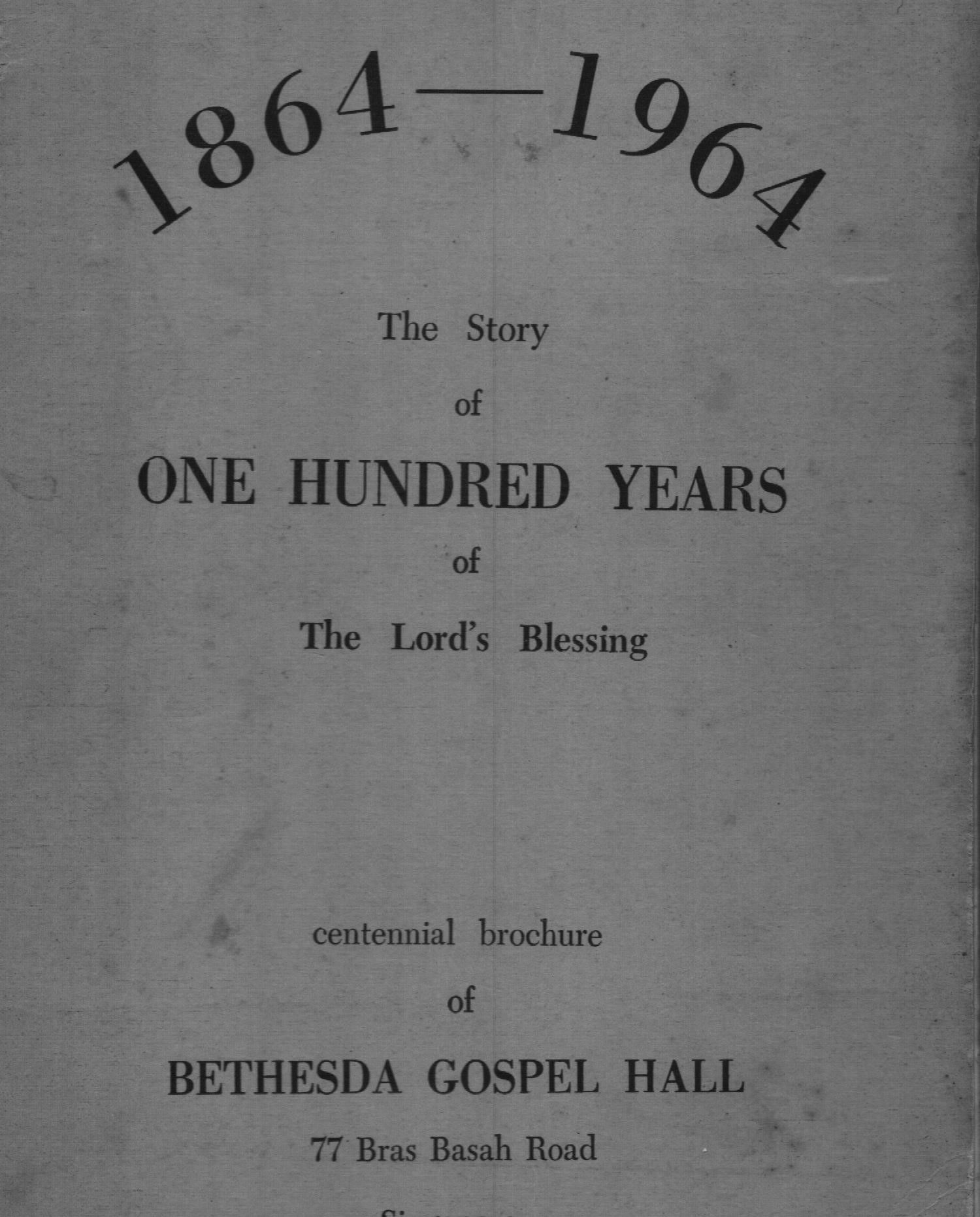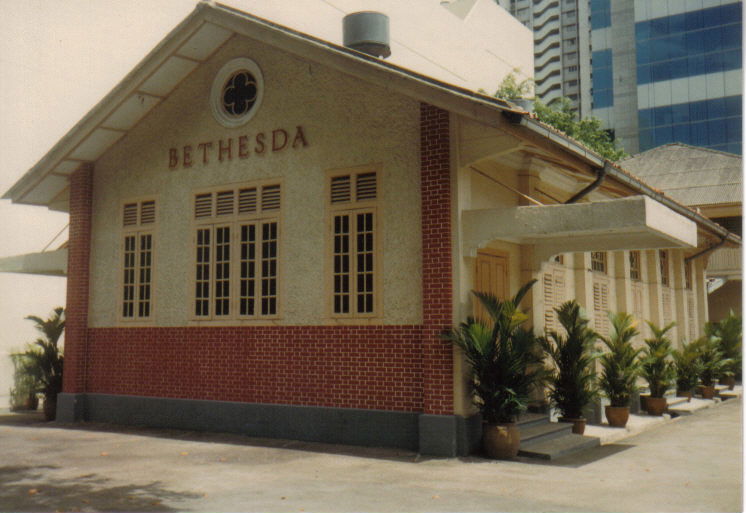附录英文部教会出版1864-1964教会百年历史回顾: 1864-1964 The Story of One Hundred Years of The Lord’s Blessing by M H Finlay

THE CHINESE ASSEMBLY Under the date of 20th January, 1867, an important entry is found — the first mention of the Chinese assembly, ― which reads as follows:— "After breaking of bread, although only five members were present, as there were one or two matters to be brought before the church, it was thought advisable to mention them. 1. The case of the Free Christian Chinese Congregation who are about erecting a meeting-house on the adjoining land to ours, it was resolved that the collections next Lord's Day, both morning and evening, be devoted to assist in this object, also that for a few weeks the use of our chapel be granted to them, they being compelled to leave their present meeting-place somewhat suddenly." No entry records the actual date of the opening of the Chinese Gospel Hall, but it was evidently towards the end of 1867. For fuller information, we turn to the Annual Report dated 30th September, 1867. "In former reports mention has been made of our wish to spread the Gospel among the Chinese and Mohamedan population; the claims of the former have been more immediately brought home to us by the fact of 8 or 9 Christians among them, some of whom had maintained a consistent profession of the Gospel for the last ten years, having come forward to request baptism, they are now meeting with about twenty other believing Chinese on simple Scriptural grounds in the Name of Jesus, and the ministry of the Word by these brethren in their own tongue is being constantly blessed to the conversion of their heathen countrymen. Though meeting in different assemblies, we have the most entire fellowship with these brethren, and pray the Lord may prosper them in every good work increasing them with men as a flock. While Jesus tarries may many precious souls be gathered into His fold of every race and clime, the few from every land making up the number of that great multitude which no man can number of all nations and kindreds and people and tongues which shall stand before the Throne and before the Lamb ..." Mr. Robinson's reference to "most entire fellowship" between the English and Chinese assemblies finds further expression in an entry on 5th July, 1868. , "The whole of the Chinese brethren who are accustomed to meet for worship in a house adjacent, joined with us at Bethesda this morning in remembering our Lord; prayer, praise and exhortation being rendered both in English, Chinese and Malay. Adam Hope, a seaman of H.M.S. "Grasshopper", who has for some months past rejoiced in Jesus, and a Chinese convert were baptised by Brother Grant." From other sources we learn the names of some of the most prominent members of )hc Chinese assembly in those early days. In addition to Mr. Tan See Boo, there were brethren Soo Hoo.Ah Toh, Gan Hui, Chong Ghee Loong, Png Puah, and Kang Kim. Who they were and what they did are not recorded on earth, but have been recorded in heaven and although forgotten by men they shall have their reward for faithful service in that day when the Lord of the Harvest rewards His servants. The Chinese Gospel Hall was used regularly for about 30 years, but by then it had become very dilapidated and was found to be in a dangerous condition. "The Chinese brethren met together on 3rd October, 1899 to consider the urgent need for repairs and suggested alterations. At the meeting it was unanimously agreed to leave the repairs and alterations in the hands of Mr. Alfred R. Thoburn. It was found exceedingly difficult to alter a building quaintly built in Chinese style into a useful hall. Mr. Claude La Brooy (who was then just a young man starting out in life as an architect and surveyor — later in Ipoh) proved himself equal to the task and produced suitable plans. The Chinese Gospel Hall which had thus been practically rebuilt (was opened on Tuesday, 20th February 1900, with a conversational fellowship tea and about 150 friends were present. From the opening of the hall to the present day (1919) services have been held regularly and the Hock Im Koan is still a distinctive landmark along the main through fare of Singapore." (From "100 years in Singapore").



